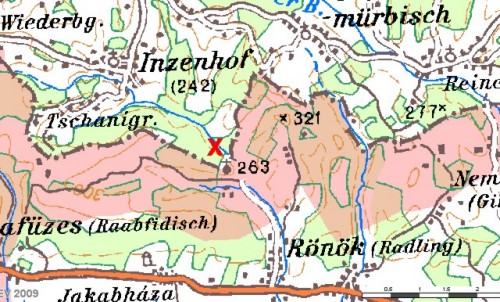|
|
|
The Church of Szent Imre in Rönök |
|
Architectural History of the ChurchThe Original Church Only a few reports about the original church building are known. The first mention of a sacred building in Felsorönök appeared in the 15th Century when a priest named Kelemen was reported working there in 1452. In 1698 a historian named Kazo referred to the church as spacious and having an arched chancel and a wooden choir. A church inquiry from 1757 showed that the church, which stood some distance to the west of the village (probably Alsórönök), had a tower covered with wooden shingles as well as a vestry. The chancel was-arched (as already described in 1698) and the nave had a ceiling made of wooden boards. The facilities included three altars: the main altar of St. Emmerich and two unconsecrated altars dedicated to the Virgin Mary. On July 15, 1864, lightning struck the church tower. The repairs lasted until 1866. In 1867, a new altar dedicated to St. Emmerich was purchased and consecrated on the June 11th of that year. Three days prior, on June 8th, a new pulpit commemorating the coronation of Emperor Franz Joseph I as King of Hungary had been completed. The Construction of the New Church
The Reconstruction of the Church Only after the fall of the Iron Curtain in 1989 could
the reconstruction of St. Emmerich commence. To this purpose the association "Save St.Emmerich’s Church” was
established and held its inaugural meeting on November 23, 1989. The restoration project, which was championed
particularly by the association’s chairwoman, Elfriede Jaindl from Inzenhof, began in autumn of 1990.Various
companies and organizations contributed to the success of the project, among them the Vocational Schools in
Vienna-Floridsdorf and Villach, who completed the copper work on the tower in 1991 under the direction of Guild
Master Manfred Willitsch. On August 19, 1991, the tower cross was blessed by Pope John Paul II in the presence of
Bishops Stefan László (diocese of Eisenstadt) and István Konkoly (diocese of Szombathely). At that time, only the
tower and the roof of the church had been finished. The following year, the remaining church was completed and
consecrated on September 20, 1992. In addition, pictures are available on Hannes' current
website, Scholem & Friends: See also: History of Rönök / Radling
|
|
|
by Johannes Graf |
2010.12.06 |


